Abstract
A total of 1,071 whitefish chub samples were examined at eight stages of processing, including sampling aboard ship, various processing steps in the smoking plant, and display in retail cases. The frequency of Clostridium botulinum contamination of freshly caught and eviscerated chubs was approximately 13 to 14%. The highest percentage of contamination (20%) was noted among chubs sampled at the brining step of processing. The prevalence of contamination among chubs sampled at other processing stages prior to the smoking operation ranged from 6 to 14%. Of 858 freshly smoked chubs that had been processed at 180 F for 30 min (internal temperature of loin muscle), 10 were contaminated with C. botulinum (1 Type B and 9 Type E). The use of heat-shocked (60 C for 15 min) and nonheat-shocked enrichment cultures in combination yielded a greater number of positive samples than either method yielded when used alone. Each toxic enrichment culture obtained was subcultured to obtain isolation of the toxigenic organism. Toxigenic pure cultures of C. botulinum were obtained from 80% of the fish samples observed to produce toxic enrichment cultures.
Full text
PDF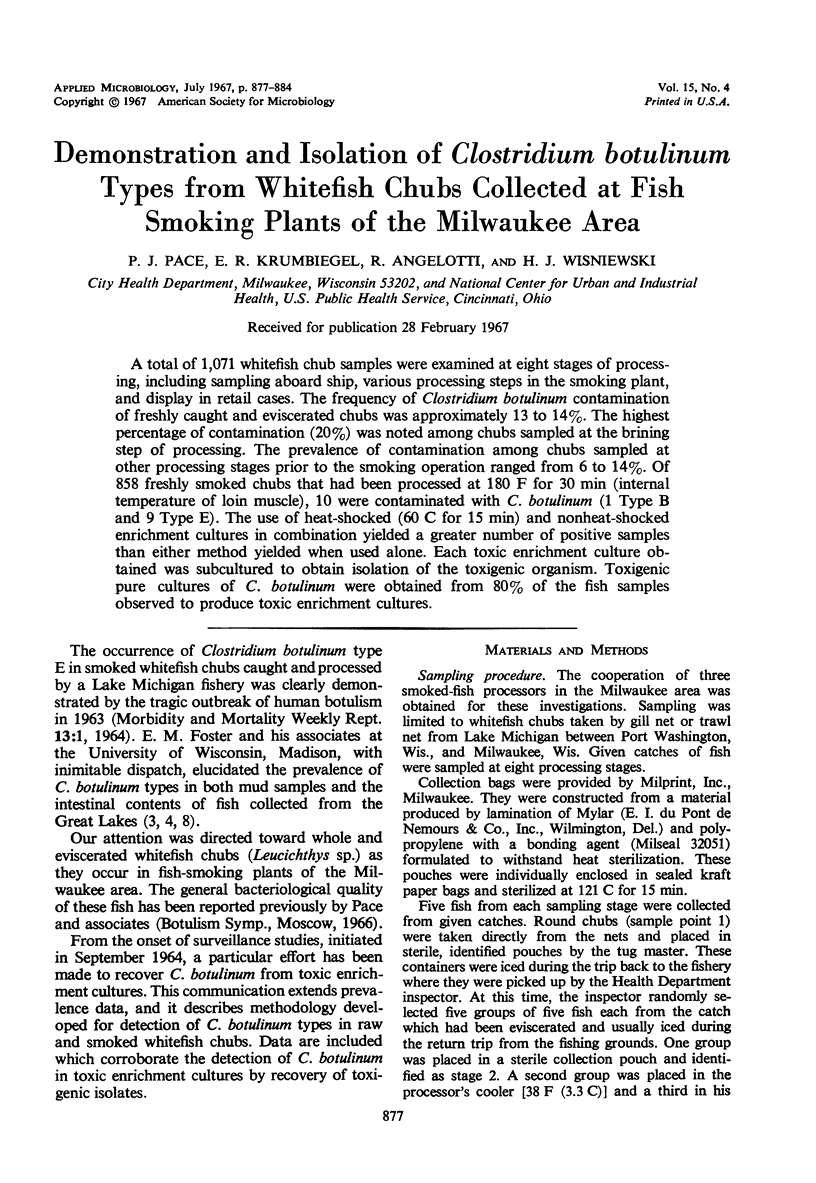
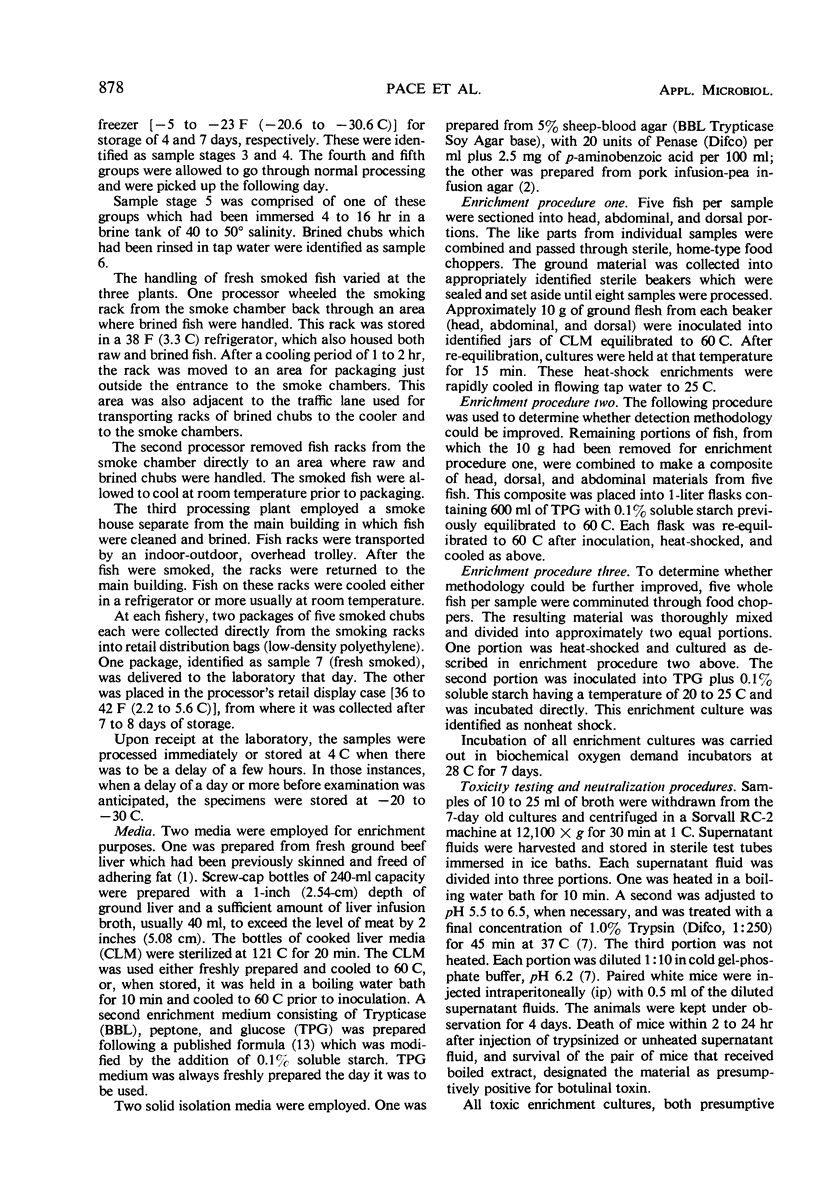
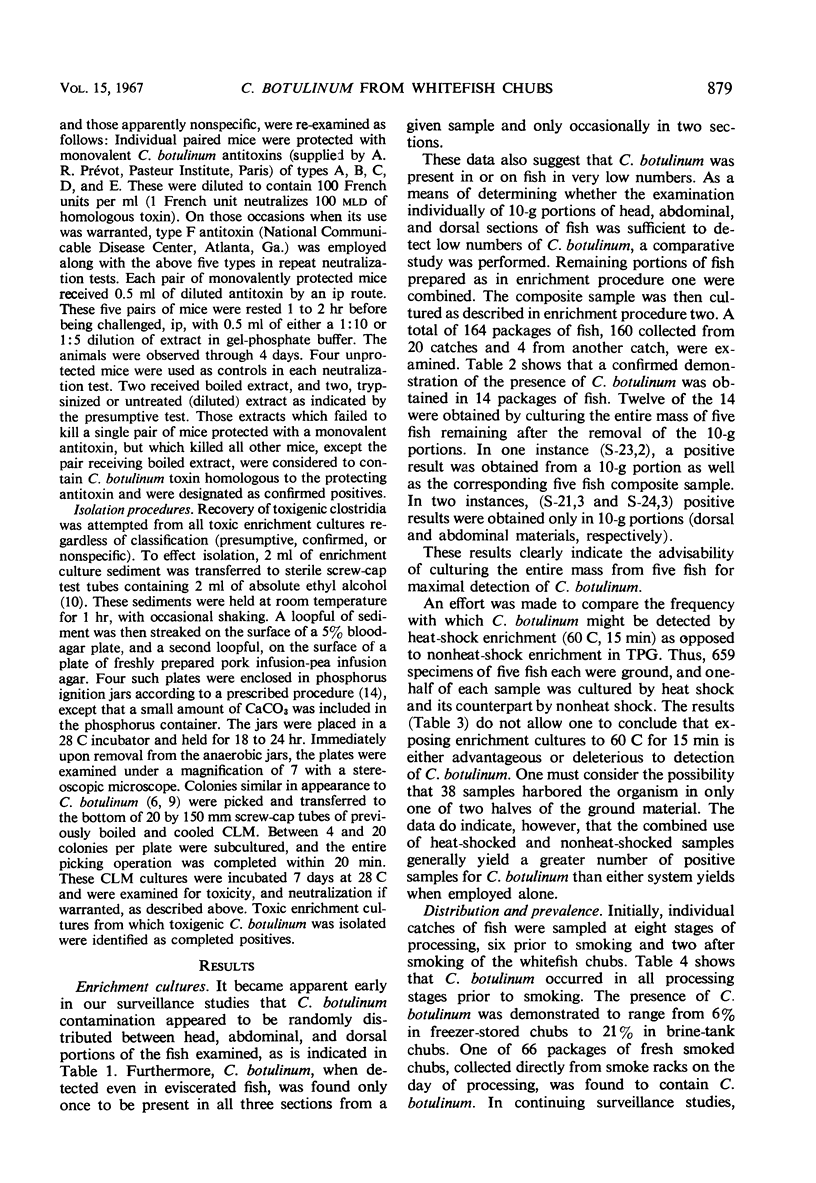
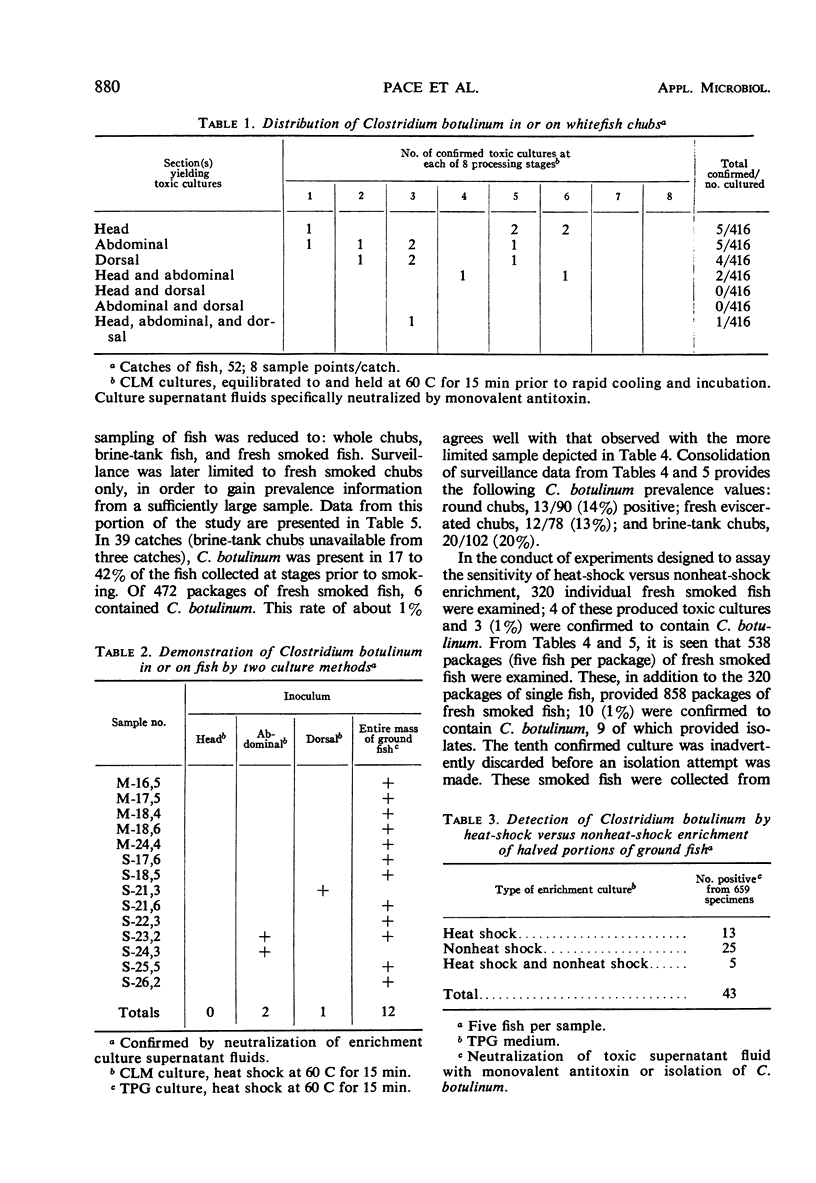
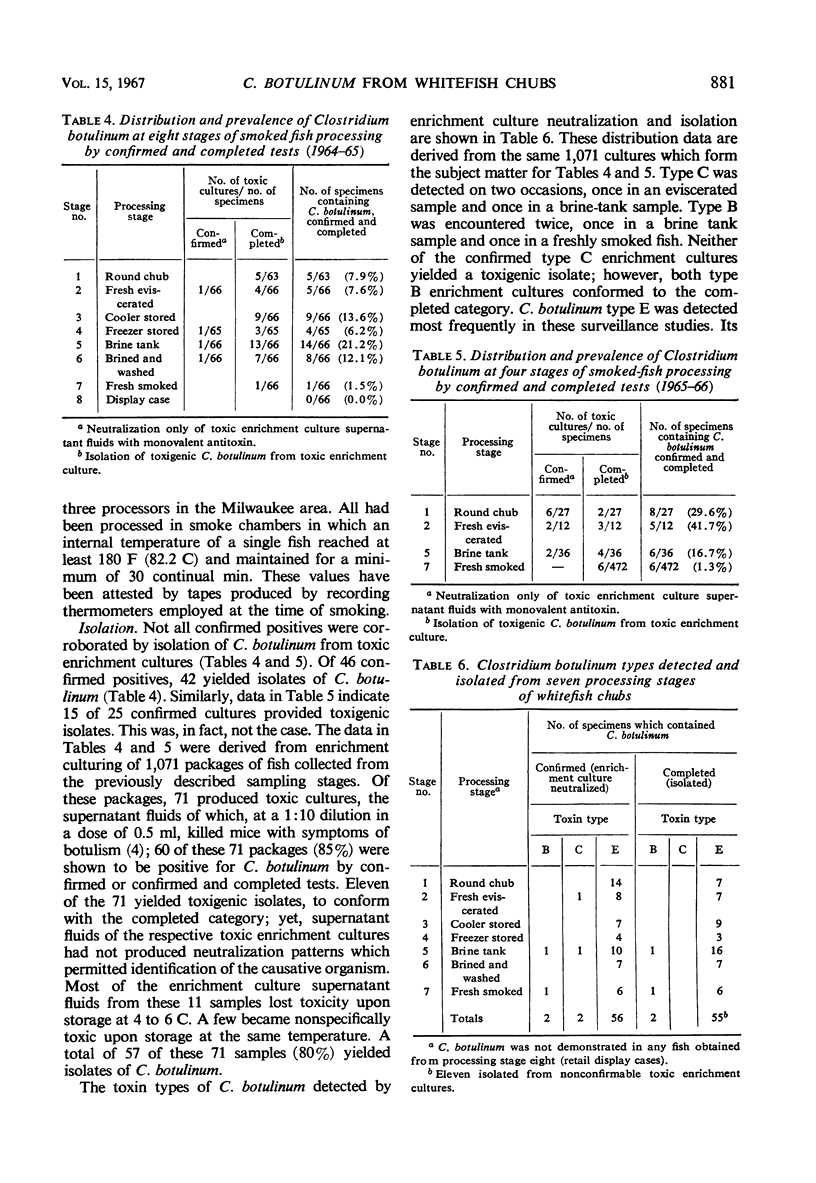
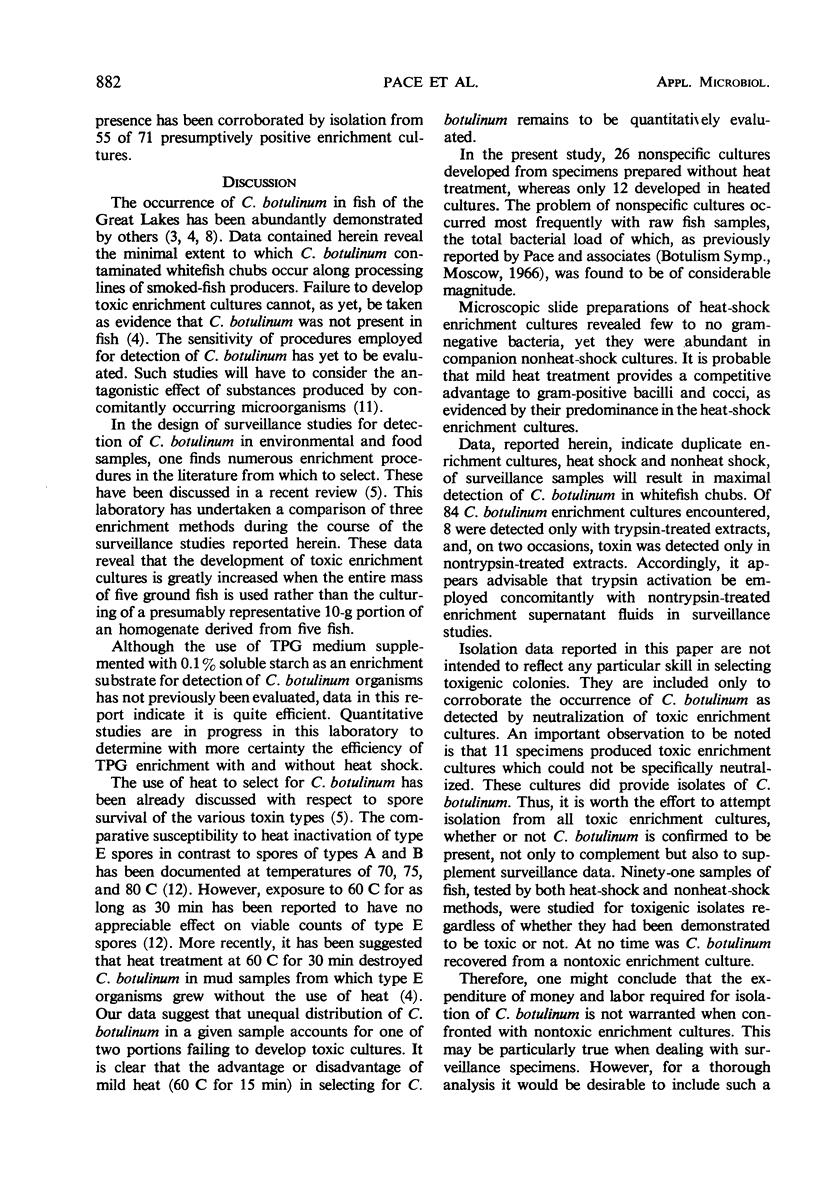
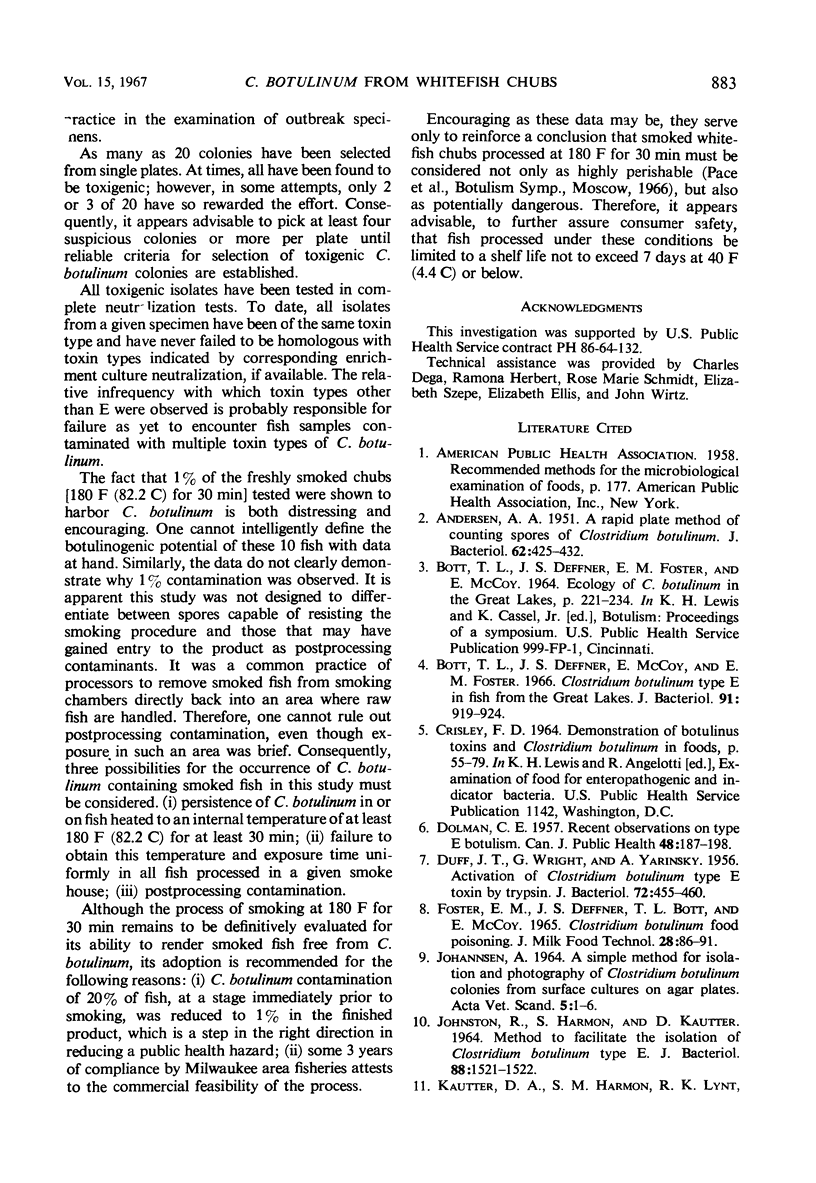
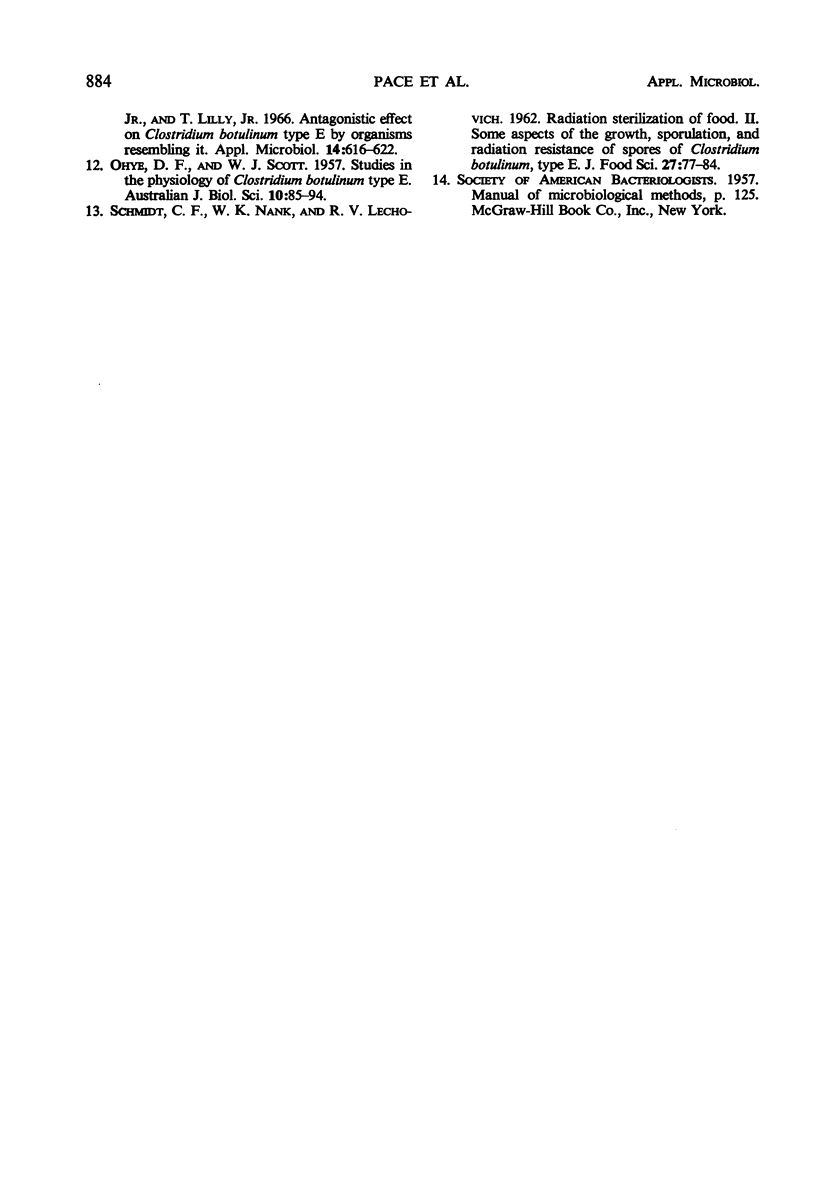
Selected References
These references are in PubMed. This may not be the complete list of references from this article.
- ANDERSEN A. A. A rapid plate method of counting spores of Clostridium botulinum. J Bacteriol. 1951 Oct;62(4):425–432. doi: 10.1128/jb.62.4.425-432.1951. [DOI] [PMC free article] [PubMed] [Google Scholar]
- Bott T. L., Deffner J. S., McCoy E., Foster E. M. Clostridium botulinum type E in fish from the Great Lakes. J Bacteriol. 1966 Mar;91(3):919–924. doi: 10.1128/jb.91.3.919-924.1966. [DOI] [PMC free article] [PubMed] [Google Scholar]
- DOLMAN C. E. Recent observations on type E botulism. Can J Public Health. 1957 May;48(5):187–198. [PubMed] [Google Scholar]
- DUFF J. T., WRIGHT G. G., YARINSKY A. Activation of Clostridium botulinum type E toxin by trypsin. J Bacteriol. 1956 Oct;72(4):455–460. doi: 10.1128/jb.72.4.455-460.1956. [DOI] [PMC free article] [PubMed] [Google Scholar]
- JOHNSTON R., HARMON S., KAUTTER D. METHOD TO FACILITATE THE ISOLATION OF CLOSTRIDIUM BOTULINUM TYPE E. J Bacteriol. 1964 Nov;88:1521–1522. doi: 10.1128/jb.88.5.1521-1522.1964. [DOI] [PMC free article] [PubMed] [Google Scholar]
- Kautter D. A., Harmon S. M., Lynt R. K., Jr, Lilly T., Jr Antagonistic effect on Clostridium botulinum type E by organisms resembling it. Appl Microbiol. 1966 Jul;14(4):616–622. doi: 10.1128/am.14.4.616-622.1966. [DOI] [PMC free article] [PubMed] [Google Scholar]


